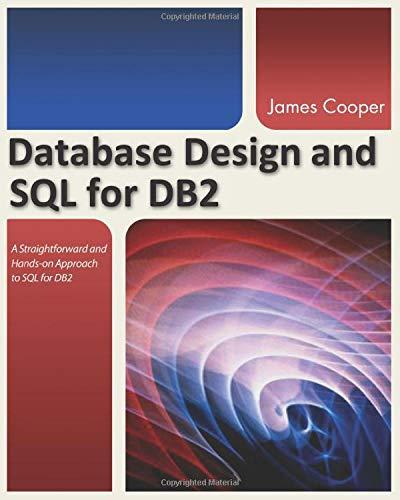Answered step by step
Verified Expert Solution
Question
1 Approved Answer
Old MathJax webview Java please This is a simulation of Round Robin (RR) CPU scheduling algorithm and the system queues: Given the following declarations: struct
Old MathJax webview


Java please

This is a simulation of Round Robin (RR) CPU scheduling algorithm and the system queues: Given the following declarations: struct PCB int proc-id; int PC: int CPU-Bust; int RI , R2; // Program Counter (Instruction Pointer IP) // Two dummy Registers PCB readxQ[8]; PCB jobQ[9]; PCB 100[17]; int jobgk, jobqR; int iogE, ioqR; ipt url: int regl , reg2; // Front & Rear pointers of job queue // Front & Rear pointers of the i/o queue // Number of processes in the ready queue The main function may look like: void main() { initialize; processor; . . (A) In initialize function Create 8 processes in the ready Create 9 processes in the job. The iol is initially empty The jobQ and ioQ queues, each has two pointers to the Front & Rear, the processes are added to the Rear of the queue and removed from the Front. You may use any data structure you want in the queue implementation, but I suggest to use the idea of circular array concept for jobQ and ioQ, for the readyQ use a normal array since processes are serviced sequentially using RR scheduling algorithm. O . Set program counter PC to 100 in all processes Give a number 1...17 to process-id number. Set CPU-Burst/service time) to a value between 0-100 using random function. RI & R2 are just dummy registers, set them to 0. (B) In processor function. It must contain a repeat for ever loop. Consider a quantumn time, Q=20 units of time. Inside a do.. wbile statement, consider a switch statement with 10 options which starts . . switch statement options (choices). In one of the switch choices use a random function. Let the process wait on the joQ for TO on a certain value of the random function. In one of the switch choices, do a service for one of the processes in the io Q and swap it into the ready Each time the process enters the do.. while loop, the process CPU-time in decremented by 1. except if an I/O service is being done, that is, the process is waiting in the joQ. When the process finishes execution, the process is moved or swapped out from the readyQ to the jobQ initializing its PCB fields to new values and another process is brought (swapped in) from the jobQ. When a process needs 10, it is moved to the joQ to be serviced. Change the contents of the registers as you like using a random function. These registers must be saved and reloaded when needed (C) What is the output?? Some messages: 1. A message showing which process starts execution in case choice (100). showing the total CPU burst time 2. which process is swapped out to the jobQ and to ioQ queue, and which is swapped in the readyQ 3. Which process is being serviced in the io Q. 4. Which process has finished execution and moved to the jobQ showing its new PCB Values Notes Use any additional data structure you may need. You may program your project using C or JAVA only. Work individually, your code will be checked using Turnitin, any sign of copy will bear heavy penalty Submit your source code by replying to the message 431-project-F21 This is a simulation of Round Robin (RR) CPU scheduling algorithm and the system queues: Given the following declarations: struct PCB int proc-id; int PC: int CPU-Bust; int RI , R2; // Program Counter (Instruction Pointer IP) // Two dummy Registers PCB readxQ[8]; PCB jobQ[9]; PCB 100[17]; int jobgk, jobqR; int iogE, ioqR; ipt url: int regl , reg2; // Front & Rear pointers of job queue // Front & Rear pointers of the i/o queue // Number of processes in the ready queue The main function may look like: void main() { initialize; processor; . . (A) In initialize function Create 8 processes in the ready Create 9 processes in the job. The iol is initially empty The jobQ and ioQ queues, each has two pointers to the Front & Rear, the processes are added to the Rear of the queue and removed from the Front. You may use any data structure you want in the queue implementation, but I suggest to use the idea of circular array concept for jobQ and ioQ, for the readyQ use a normal array since processes are serviced sequentially using RR scheduling algorithm. O
Step by Step Solution
There are 3 Steps involved in it
Step: 1

Get Instant Access to Expert-Tailored Solutions
See step-by-step solutions with expert insights and AI powered tools for academic success
Step: 2

Step: 3

Ace Your Homework with AI
Get the answers you need in no time with our AI-driven, step-by-step assistance
Get Started


